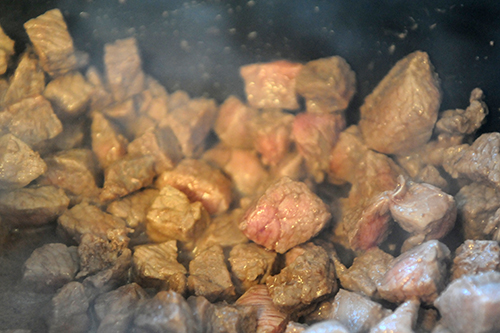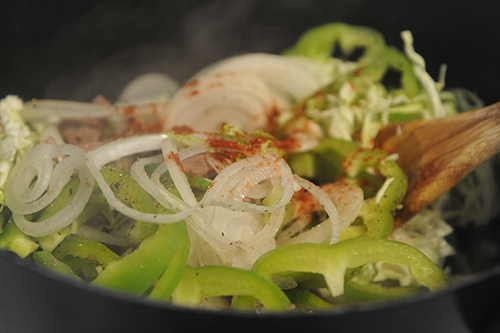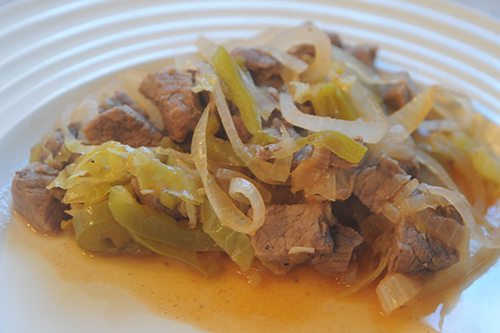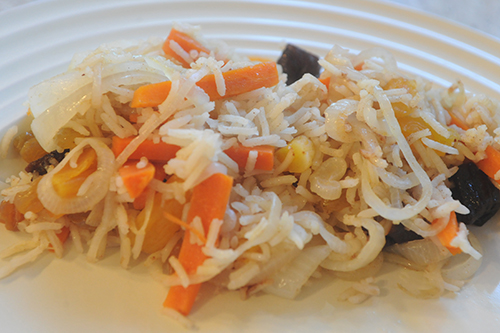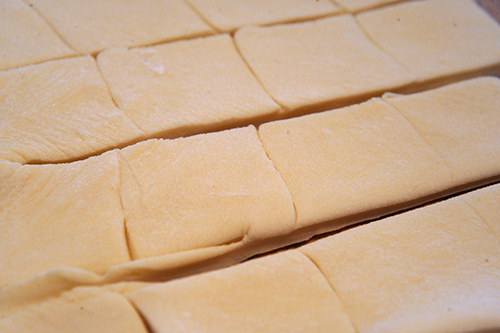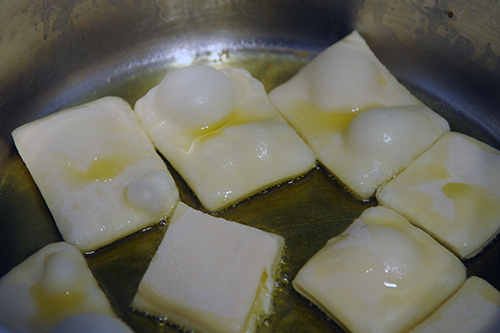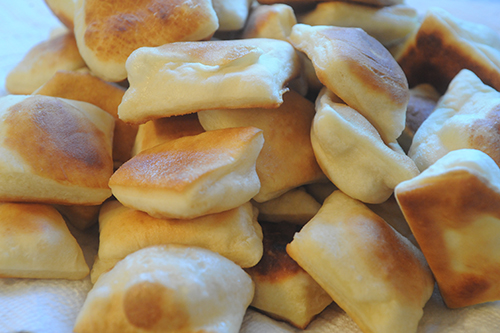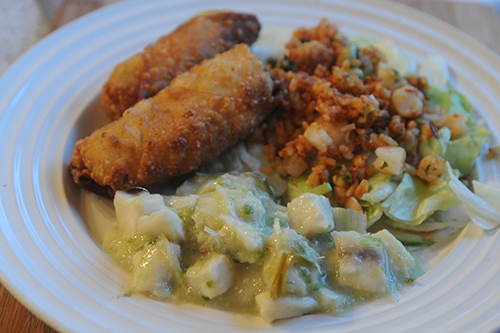 |
We do tend to bypass some of those lesser-known Asian cuisines, though, which is a shame. I've had some great food from places like Burma and Cambodia, and now Laos.
 |
| VangViang, Laos. Photo by Taylor Miles. |
Laos, as you may or may not know, is a small place especially when compared to China and some of its other neighbors. Although with a population of 6.5 million people, I guess you can't really use the word "small."
Laotians eat a lot of sticky rice, which is their primary staple. It is generally eaten with the hands, which sounds quite messy. The cuisine of Laos has some French influences but is mostly distinctly its own thing, with unique dishes like a spicy green papaya salad and a raw meat dish called “larb.” I didn’t go with the raw meat dish because, you know, kids, but here’s what I did pick:
Mok Pha (Steamed Fish in Banana Leaves)
(from The Daring Kitchen)
- 1 lb catfish or tilapia, cut into 2-inch pieces
- 1/2 cup sticky rice, soaked overnight*
- 3 shallots, peeled
- 2 lemongrass stalks, sliced
- 1/2 cup green spring onions
- 10 kaffir lime leaves, finely sliced
- 4 tbsp fish sauce
- 1 tsp salt
- 1 tsp sugar
- 6 to 8 chili peppers (optional)
- 4 to 6 banana leaves, cut into 10-inch piece
Nam Kao (Spicy Red Curry Rice Salad with Shrimp)
(also from The Daring Kitchen)
- 2 cups of cooked jasmine rice, cooled
- 1/2 cup of fish sauce
- 1/2 cup fresh lime juice
- 1/3 cup red curry paste (Maesri brand)
- 1/4 cup fresh mint, coarsely chopped
- 1 egg
- 1/4 cup green onion, finely chopped
- 1/2 lb shrimp, peeled, blanched, and coarsely chopped
- 1/2 gallon vegetable oil
- 2 tsp roasted peanuts, finely chopped (optional)
- Red pepper flakes (optional)
- Lettuce or endive
(from daianddal)
- Spring roll wrappers
- 3 to 4 cups vegetable oil
- 2 lbs ground pork, cooked
- 1 1/2 cups carrot, grated
- 1 1/2 cups cabbage, sliced
- 1 1/2 cups bean sprouts
- 1 1/2 cups mung bean noodles
- 1 cup black fungi mushrooms, soaked for five minutes and sliced
- 1 large onion, sliced
- 2-3 stalks green onions, sliced
- 2 medium eggs
- 4 cloves garlic, minced
- 2 tbsp oyster sauce
- 2 tbsp sugar
- 1 tbsp chicken bouillion
- 2 tsp salt
- 1 tsp white pepper
(also from daianddal)
- 2 cups water
- 1 1/2 cup white sugar
- 1 garlic clove, crushed
- 1/4 cup fish sauce
- Juice of one lemon
- 1 tbsp white vinegar
First soak the mung bean noodles in cold water for about five minutes, then drain. Now transfer to a large bowl and mix with the rest of the filling ingredients.
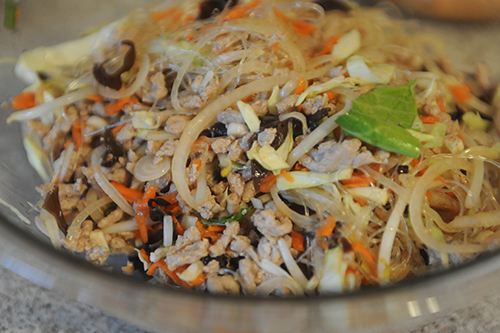 |
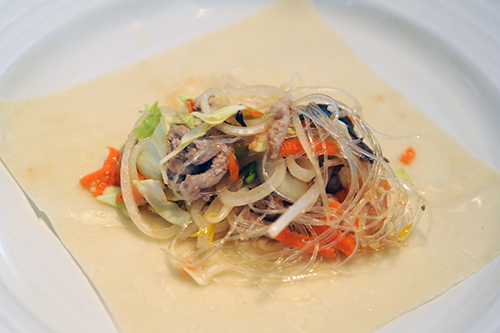 |
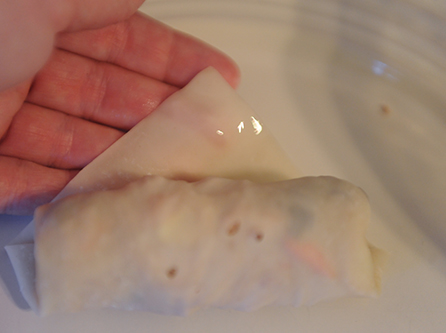 |
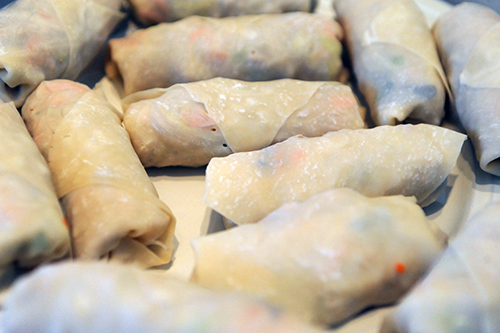 |
Now drop a few of the spring rolls into the oil. There should be plenty of room for them to move around without touching each other--you don't want them to stick. When the rolls are golden on all sides, they're done. Remove and drain on paper towels. Serve at once.
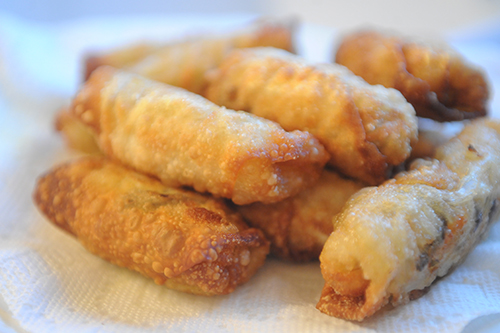 |
First mix the sugar and water together and heat over a medium flame. After the sugar dissolves, add the crushed garlic. Now turn off the heat and add the rest of the ingredients. Stir to combine.
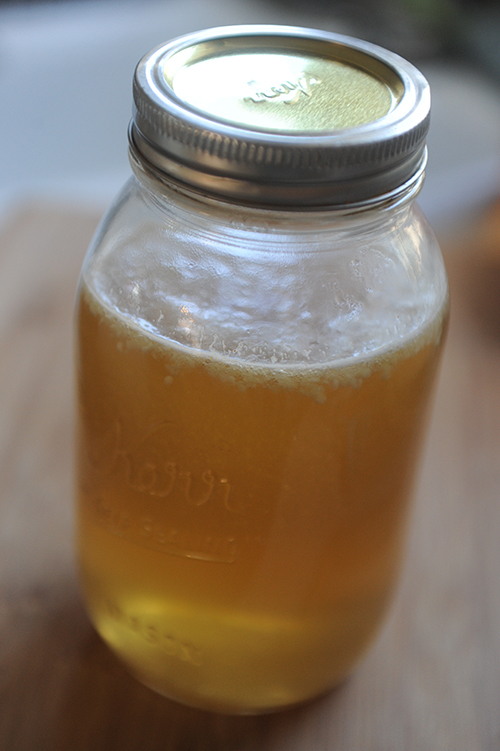 |
First, mix the shrimp with 1/4 cup lime juice and 1/4 cup fish sauce. Let chill in the fridge while you prepare the rest of the ingredients.
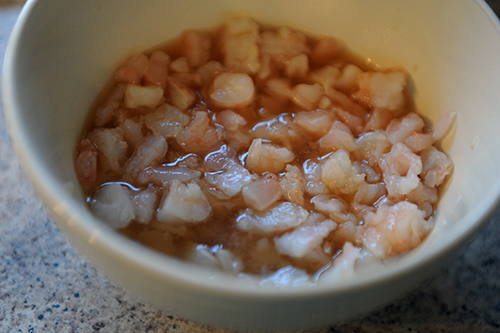 |
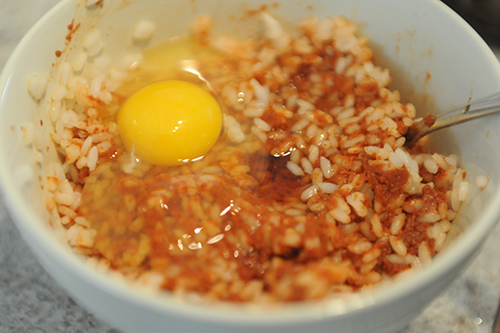 |
Meanwhile, heat some more oil. Yes, this is a very deep-fried culinary experience. When the oil is ready, drop the balls in and fry until golden. Transfer to a strainer and let drain and cool.
Now crush the rice balls up into roughly 1/4 inch pieces. Stir in the rest of the fish sauce and lime juice. Add the shrimp, herbs, peanuts and red pepper flakes (if using).
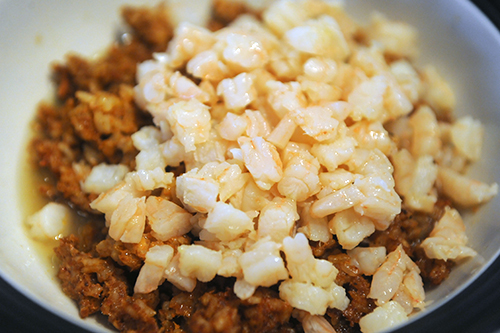 |
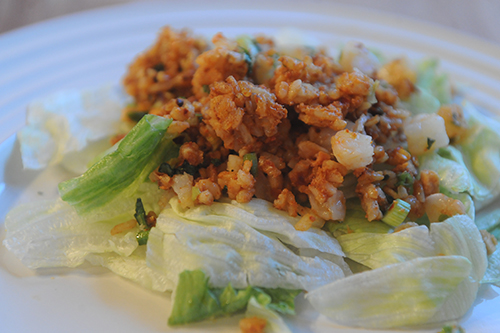 |
First make the cocktail sauce, like this: put the sticky rice, lemongrass, shallots, chili pepper and green onions into a blender, adding up to a half cup of water as needed. Puree until it is a saucy consistency. Add sugar and salt to taste.
Now put the fish pieces in a large bowl and pour the cocktail sauce over.
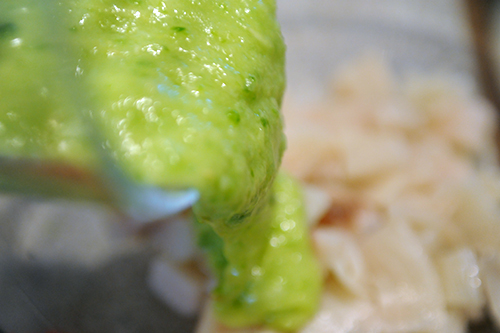 |
Now place some of the fish mixture on a banana leaf. Fold into a triangle shape and secure with toothpicks. Steam for 25 minutes (I used a vegetable steamer. It was messy, but it worked fine.)
 |
I liked the fish, though it definitely maintained a banana leaf flavor, which for some people can be a bit too earthy. It was also very heavy on Kaffir lime flavor, which I happen to like, but again it's an odd flavor that I don't think a lot of Americans are used to. But over all, not terribly strange. The rice and shrimp salad on the other hand was crazy weird. it was really spicy and the texture was very unusual. The spring rolls were the most familiar of the three dishes. I've had plenty of fried spring rolls, but probably not with these particular fillings. They had a great crunch to them, both inside and out, and the sweet dressing was a perfect match for them. My kids, of course, preferred the spring rolls and not really anything else. Martin was OK with the other two dishes but I think he preferred the spring rolls, too. I liked it all--it was exotic and interesting and tasted great, too.
Moving on down the alphabet now! Next week: Latvia.












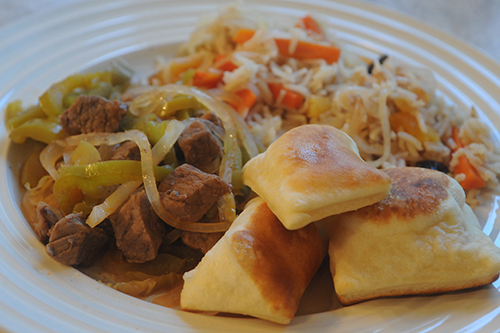

.svg/250px-Kyrgyzstan_(orthographic_projection).svg.png)
